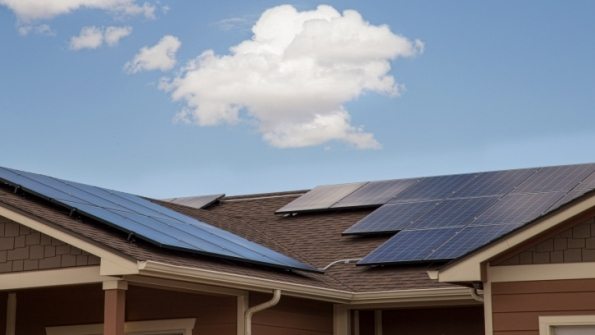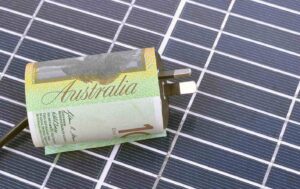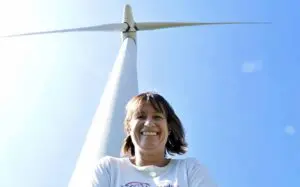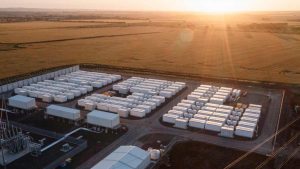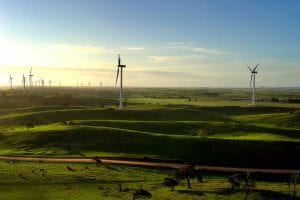Through the introduction of new standards to come into effect on December 18 2021, electricity grid operator AEMO wants to harness the collective capability of inverters, through new operational settings, to help manage and secure the electricity system and distribution networks.
Do I need to upgrade my existing inverter?
If you’ve already installed solar, it won’t affect you as it only applies to inverters installed after December 18. But if your inverter stops working and needs replacing, a compliant inverter will be necessary.
If you’re going to apply to install a system after December 18, you’ll be the new owner of a spec’d up inverter with more capability than it’s older brother in helping to keep the lights on and create the stability and flexibility in the electricity grid that will accommodate more and more solar PV systems. But you won’t be operating the controls, they’ll be configured in mandated settings.
If an inverter isn’t compliant, it won’t be available for approval to install by the Clean Energy Council, or your network service provider.
The standard also applies to EVs when they export energy to the grid.
Why are inverters being upgraded?
Over 2.5 million or about 25% of households have solar, with a combined capacity of over 13 gigawatts. In fact, distributed solar is collectively the largest generator in the market and it’s growing fast – around 30,000 new solar systems are being installed and added to the NEM each month.
Every PV system pumps a load of electricity into the local grid during sunny production periods (unless all of the energy produced is used onsite) – but this must be balanced with the amount of electricity being consumed at that time.
At peak solar generation times, if the demand is low the collective influx of solar power can increase the voltage and frequency on the local grid beyond the allowable parameters set in solar inverters. This causes them to throttle their output, or disconnect.
PV systems in some areas may only experience this a few times a year, with negligible impact. Consider that a 6kW system might save it’s owner $3 a day. But where a local grid is frequently experiencing over voltage, inverters may be operating below capacity for a significant portion of the year, causing more meaningful losses.
And, if the grid voltage is high, more power is used to run appliances in households in the affected area, increasing energy costs and potentially causing damage to appliances.
Other disturbances on the grid, like a coal-fired plant going offline, or high electricity demand causing lower voltage and frequency, can cause inverters to trip and shut down. If the frequency falls too much, solar inverters and other power plants can switch off one after another in a cascading effect causing a blackout.
The inverter is the brain of your solar system. It’s core function is to convert the direct current (DC) from the solar panels into alternating current (AC) usable in the home and on the grid. But inverters are also equipped with smart communication, monitoring and control capabilities and AEMO’s new standards harness these with mandated operational settings, to respond to conditions on the electricity grid that might otherwise cause blackouts, poor power quality or PV systems to trip and shut down.
Will the changes increase the cost of a solar PV system?
According to Rod Dewar of Fronius, the changes will have no impact on the cost of their inverters for consumers.
What do the new standards do?
The new settings and requirements will:
– Allow inverters to ride through multiple grid disturbances so they continue to stay connected and deliver power, or to disconnect to prevent a major event ;
– Help improve the power quality in your home or business ;
– Provide grid support functions that will allow more solar, battery and EVs to connect to the grid ;
– Improve the accuracy of measurements from the meters that monitor the inverters, to ensure they respond correctly to different conditions; and
– Improve the testing procedures that ensure the inverters are compliant.
The new inverter standard also requires that the DC isolator is integrated into the inverter, instead of mounted externally.
Rod Dewar from Fronius says this is a good thing, as inspectors no longer need to see if the installation of the isolator is compliant. He also says, “In general it is safer because there are less DC connections in the system. Any connection is a potential point of failure so this reduces the risk.”
Is the Government going to shut down my solar?
Do not conflate these changes with South Australia’s 2020 rule that enabled remote shutdown of inverters in the event of an emergency.
There are no new requirements for inverters in all other states in the NEM to enable inverters to be remotely shut down. The rule change in SA was made because renewables have a much higher penetration of the market. An AEMO representative told One Step Off The Grid that this has been identified for consideration in future work.
Should I get my old inverter’s firmware upgraded?
You are not required to do this. Nonetheless, Rod Dewar from Fronius says that some inverters can be upgraded in the field or online, but it is site dependent.
“If you’re at the end of a line or there is high voltage and the system is really old, then the current trip-off limits are higher,” he said. “But if they upgrade to the lower trip off limits, their production could reduce. If it’s not an area affected by this then, yes, upgrading might be an option.”
The benefit in upgrading to the owner is that it will make sure that the system stays online when there is a fault, but that is unlikely to be very frequent.
Should I be rewarded for having my new inverter used to balance the grid?
With these new standards, inverters are playing a much more active role in balancing generation and load in the grid so that it operates safely.
Generators such as coal and gas-fired power plants have traditionally been paid by the grid operator AEMO to perform this function through the Frequency Control Ancillary Services (FCAS) market. FCAS provides a fast injection of energy, or fast reduction of energy, to manage supply and demand.
James Sturch, technical director RoW (Rest of World) at SolarEdge Technologies says “Millions of inverters owned by consumers are performing a job supporting the network and not being paid for it.” He acknowledges that most owners would be unaware of the situation but, he says, “it brings up some ethical questions from an equity point of view.”
For more, listen to Energy Insiders Podcast: Why inverters are key to a renewables grid.
See also: Looming deadline for new inverter standards causes anxiety for solar industry.

